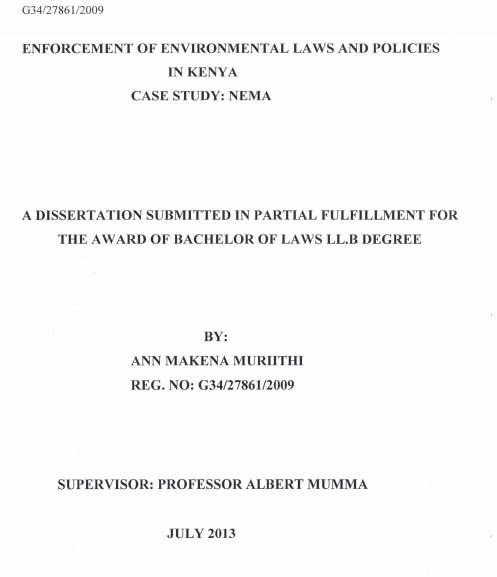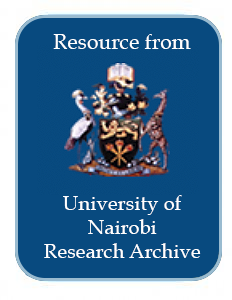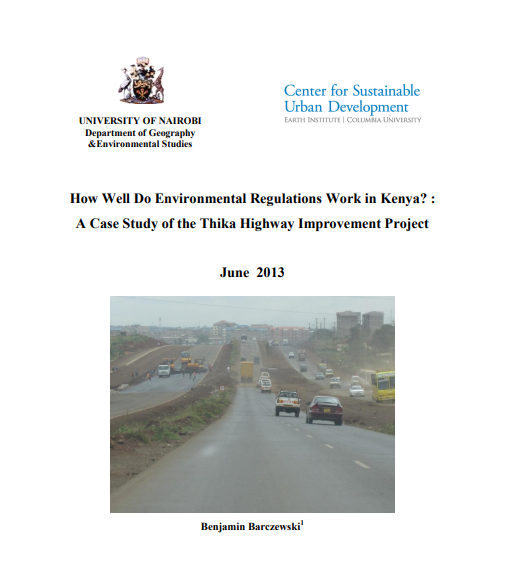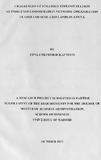Location
Our Vision is to be a world-class university committed to scholarly excellence.
Our Mission is to provide quality university education and training and to embody the aspirations of the Kenyan people and the global community through creation, preservation, integration, transmission and utilization of knowledge.
Core Values
In order to realize the above vision and mission, certain shared values shall be nurtured. There is great need for the University to be guided by the right values derived from the virtues and moral standards of the Kenyan and wider society.
Core Functions
Teaching and Learning: The university offers innovative , relevant and market driven academic programmes , both at undergraduate and postgraduate levels with inbuilt quality control systems the university also provides an environment and policy framework for undertaking high quality and relevant research
Members:
Resources
Displaying 91 - 95 of 298Enforcement Of Environmental Laws And Policies In Kenya Case Study: Nema
The environmental sector in Kenya is one of great importance. However, attention in its protection and conservation from a legal point of view came to prominence a decade ago with the enactment of the Environmental and Management Coordination Act of 1999 and the subsequent formation of the National Environmental Management Authority under section 7 of the act.
Perceptions of Land Conflicts with Special Reference to Nairobi
Land conflicts are increasingly becoming common in Kenya's major urban areas and are blamed by scholars and
politicians alike on colonial planning and rule, which ended more than 40 years ago. The regulations on land use
I planning and public land allocation processes are also seen to have exacerbated the problems with the prevailing
institutional arrangements further providing the impetus for unequal access to the 'land resource. Corruption and
patronage coupled with the increasing population has ensured that the poor have limited access to land for housing.
How Well Do Environmental Regulations Work in Kenya? : A Case Study of the Thika Highway Improvement Project
Kenya’s hurried pursuit of infrastructure developments in the last decade has highlighted the need for effective environmental regulation surrounding the approval, construction and operation of new projects. One such project, the Nairobi-Thika Highway Improvement Project (NTHIP), creates fertile ground for investigation into how well Kenya’s environmental safeguards work. Transforming the road from Nairobi to Thika town into a super highway is one of Kenya’s first large-scale transportation infrastructure projects.
Challenges of strategy implementation at indigenous information network organization in arid and semi-arid lands in Kenya
The ability of an organization to implement strategy successfully is important. While it is
the desire of every organisation to keep abreast with changing times and demands in the
environment, it is accepted that having strategic plans on paper and donor conferences is
very different from the on-ground implementation exercise To identify the challenges of
strategy implementation, a case study of Indigenous Information Network was conducted.
The study aimed to answer two research questions: what were the challenges of strategy
Mineral Status of Sheep and Goats Grazing in the Arid Rangelands of Northern Kenya
A study was conducted in dry and wet season to determine macro and micro mineral status of
growing sheep and goats in arid rangelands of northern Kenya. Forty four, 22 each of sheep and goats (1-2
year old), randomly purchased from three herds/flocks in study area, were sacrificed for whole liver and 12th
right and left ribs. Homogenized liver samples pooled from all the lobes and defatted bone ash from whole
left and right 12th ribs were used for determination of Ca, P, Mg, Cu, Fe, Zn and Mn status. Liver mineral






